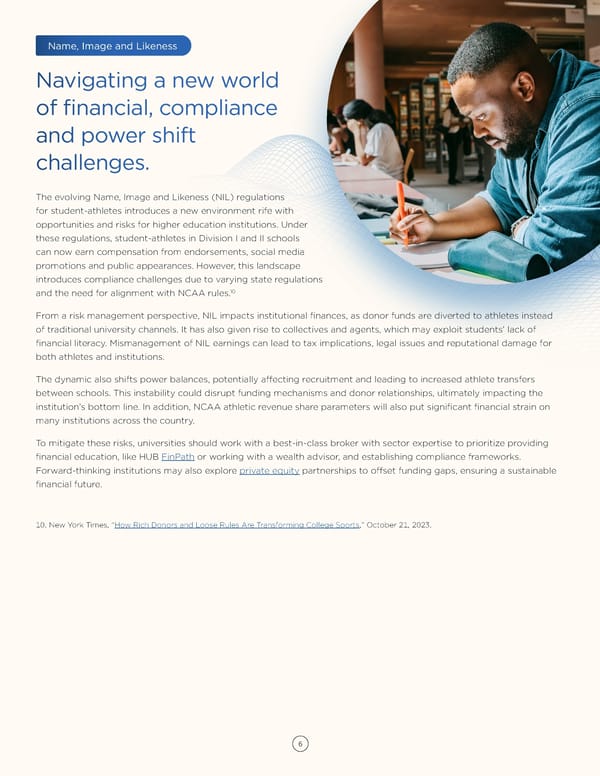NameVitality, Image and Likeness Navigating a new world of financial, compliance and power shift challenges. The evolving Name, Image and Likeness (NIL) regulations for student-athletes introduces a new environment rife with opportunities and risks for higher education institutions. Under these regulations, student-athletes in Division I and II schools can now earn compensation from endorsements, social media promotions and public appearances. However, this landscape introduces compliance challenges due to varying state regulations 10 and the need for alignment with NCAA rules. From a risk management perspective, NIL impacts institutional finances, as donor funds are diverted to athletes instead of traditional university channels. It has also given rise to collectives and agents, which may exploit students’ lack of financial literacy. Mismanagement of NIL earnings can lead to tax implications, legal issues and reputational damage for both athletes and institutions. The dynamic also shifts power balances, potentially affecting recruitment and leading to increased athlete transfers between schools. This instability could disrupt funding mechanisms and donor relationships, ultimately impacting the institution’s bottom line. In addition, NCAA athletic revenue share parameters will also put significant financial strain on many institutions across the country. To mitigate these risks, universities should work with a best-in-class broker with sector expertise to prioritize providing financial education, like HUB FinPath or working with a wealth advisor, and establishing compliance frameworks. Forward-thinking institutions may also explore private equity partnerships to offset funding gaps, ensuring a sustainable financial future. 10. New York Times, “How Rich Donors and Loose Rules Are Transforming College Sports,” October 21, 2023. 6
 Navigating Risk Management in Education: Strategies for 2025 Page 5 Page 7
Navigating Risk Management in Education: Strategies for 2025 Page 5 Page 7